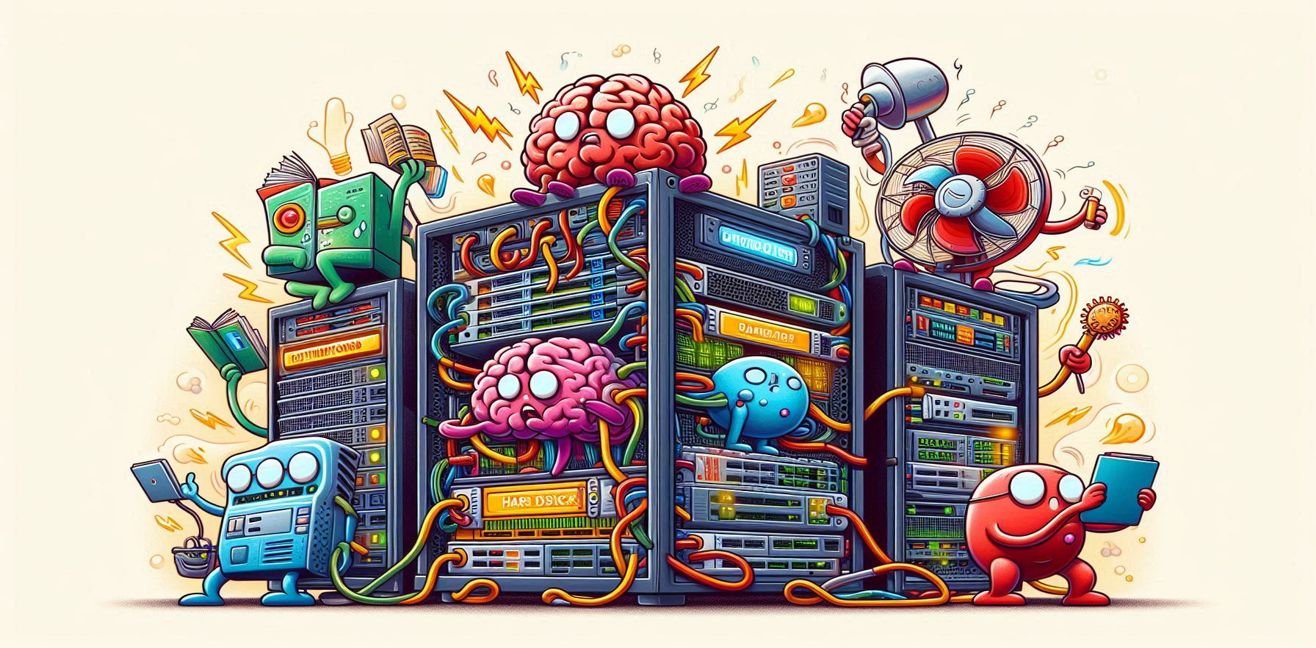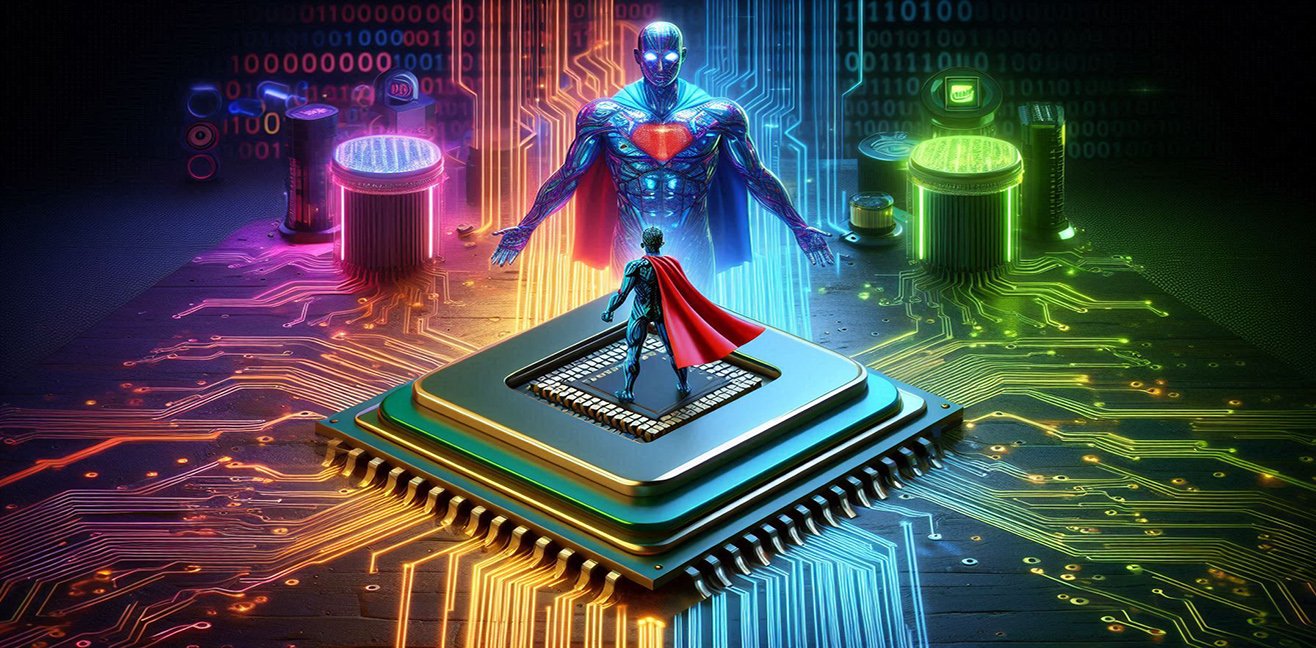(Technical detail + laughter = happiness of an engineer’s soul)
A server is basically an upgraded version of a regular computer, the one that says: “I’m no longer a child, I have a job in the data center!” 💪 But this giant refuses to work properly unless its parts are correctly installed and neatly placed inside a cabinet. That’s why knowing server assembly parts is essential—not only technically, but also for the mental health of system administrators.
Let’s break it down piece by piece:
🔧 1. Rack Cabinet (The Server’s Apartment)
- Technical Definition: A metal enclosure, typically with a 19-inch width standard, designed to house servers, switches, routers, and other network devices in an organized way.
- Dimensions: Measured in “U”. 1U = 44.45 mm in height. A 2U server takes up 2U of rack space.
- Why Important?: Physical organization + airflow + easier cabling.
- Humorous Take: Without a cabinet, the server room looks like a “spaghetti monster made of tangled cables.” 🍝
⚡ 2. Power Supply Unit (PSU)
- Technical Definition: Converts incoming AC power from the outlet into DC power for the motherboard and components.
- Features:
- Redundant PSU: Servers often have dual power supplies. If one fails, the other takes over.
- Hot-swappable: You can replace it while the server is still running. (A system admin’s lifesaver against heart attacks.)
- Humorous Take: If the PSU isn’t reliable, the server might shut down at 3 a.m., leaving you to send a Slack message: “Guys, the server just retired itself…” ⚡💀
❄️ 3. Fans and Cooling Systems
- Technical Definition: Fans create airflow, expelling hot air and pulling in cool air.
- Types:
- Front-to-back airflow: The most common in data centers.
- Liquid cooling: Found in more advanced systems.
- Why Important?: When the CPU exceeds 90°C, it throttles to protect itself. No fans = no performance.
- Humorous Take: Without fans, the server heats up like a “lahmacun oven.” 🔥
🧠 4. Motherboard
- Technical Definition: The main circuit board that all components connect to.
- Features:
- Socket: Dedicated slot for the CPU.
- DIMM slots: For RAM installation.
- PCIe slots: For RAID cards, GPUs, and NICs.
- Chipset: Manages data flow.
- Humorous Take: The motherboard is the family elder: “All of you will live on me, no questions asked!”
🖥️ 5. CPU (Central Processing Unit)
- Technical Definition: The server’s brain. Billions of transistors processing data at lightning speed.
- Differences from Desktop CPUs:
- More cores
- Larger cache
- ECC RAM support
- Popular Series: Intel Xeon, AMD EPYC.
- Humorous Take: The CPU is the “boss.” More cores = more assistants. But sometimes the boss gets tired and takes a break, calling it “thermal throttling.”
📚 6. RAM (Random Access Memory)
- Technical Definition: Temporary memory used for fast data access by the CPU.
- Features:
- ECC RAM: Error-correcting, provides reliability.
- Registered DIMM (RDIMM): More stable performance.
- Humorous Take: If RAM is too low, the server constantly goes: “Wait… where did I write that again?” 🤯
💾 7. Disks (HDD / SSD / NVMe)
- Technical Definition: Permanent storage.
- Options:
- HDD: Slow but cheap, good for archives.
- SSD: Fast, high IOPS.
- NVMe SSD: Rocket speed. 🚀
- RAID Configurations: Commonly RAID 1, 5, 6, or 10 to prevent data loss.
- Humorous Take: If the disk fails, the server stops journaling: “Dear diary… oh wait, I forgot.” 📓❌
🌐 8. Network Interface Card (NIC)
- Technical Definition: The interface that allows the server to communicate with the outside world.
- Features:
- 1GbE, 10GbE, 25GbE, 40GbE, even 100GbE options.
- Dual-port or multi-port available.
- Humorous Take: Without a NIC, the server feels like a PC in an internet café with its cable unplugged. 📴
🛠️ 9. Rack Rails
- Technical Definition: Sliding rail systems that let you easily mount or remove servers from the rack.
- Advantage: Saves you from lifting a 25 kg server alone—goodbye herniated discs.
- Humorous Take: Without rails, server mounting = 3 engineers + 1 screwdriver + lots of swearing. 🤬🔧
🔒 10. Screws, Brackets, and Cable Management
- Technical Definition: Small but critical parts.
- Why Important?: For securing servers, preventing vibration, and keeping cables organized.
- Humorous Take: Without screws, the server is like “pants without a belt.” Without cable management, opening the data center door means facing a spaghetti apocalypse. 🍝
🎯 Conclusion: A Server Without Assembly Parts = Broken Love
A server’s stability doesn’t just depend on CPU power. From rack cabinets to tiny screws, every piece matters for stability and efficiency.
The golden rule for an engineer’s happiness:
👉 Neat cabling + redundant PSU + solid rails = peaceful life.
Otherwise… at 3 a.m. the phone rings:
📞 “Hey, the server is down.”
And that’s when you realize the thing you’ve lost isn’t just uptime… it’s also your peace of mind. 😅




